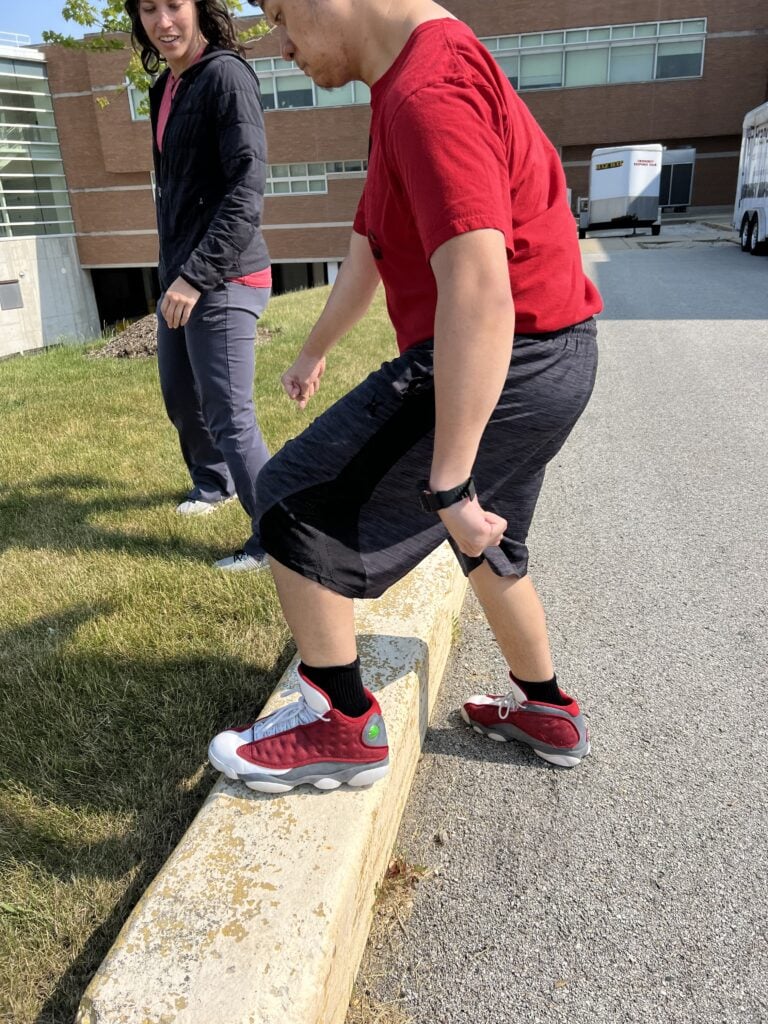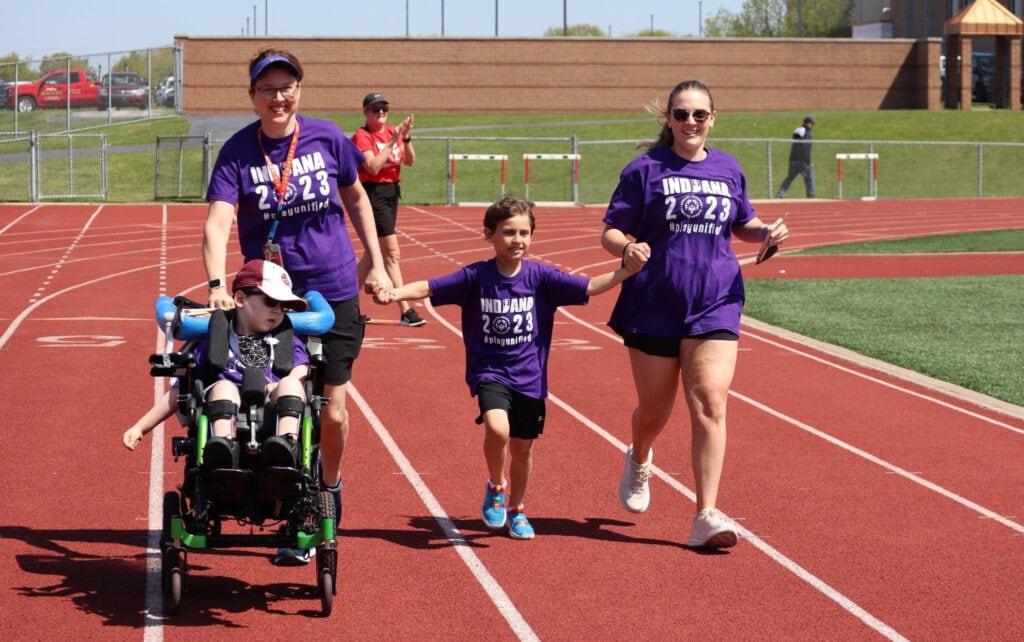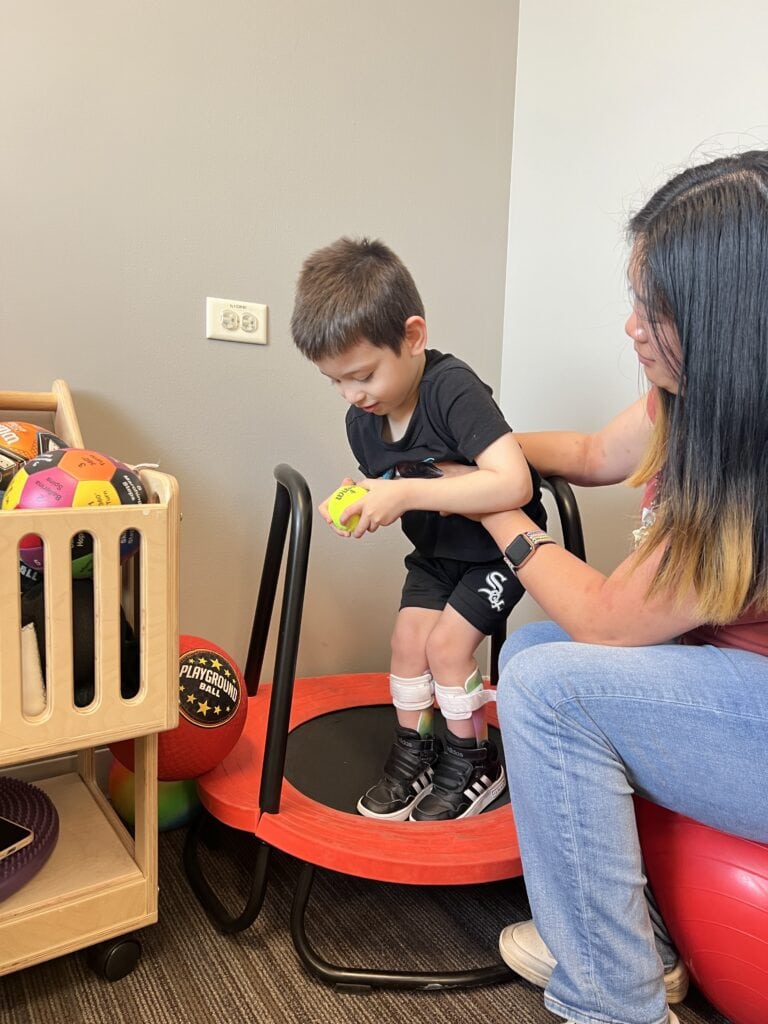Child development skills: 4 tips to teach your kid to jump
Things are changing at home. Your little one has mastered walking (who’d a’ thunk it?) and is now experimenting with jumping. (Gulp.) They might be doing some fancy variation of a squat to try to lift off, but they’re not quite there yet. They may be just falling down and laughing because it’s different and fun. But in the end, jumping is an advanced child development skill that requires strength, balance, and coordination among other things. Here are a few ideas on how to help your child put all those pieces together and keep the bruises to a minimum.
Remember that every child is different in how and when they learn new developmental skills. If you have concerns and would like your child to receive extra support, schedule an appointment with Milestone Therapy, and we’ll be happy to help!
Child development skill tip #1: The last step to learn how to jump
Why am I talking about the last step first? Because I’m referring to the last step of the stairs, of course! Encouraging your child to jump off the last step or another secure elevated surface is a great way to take what you have in your home and use it to your advantage. And when you do these things, don’t forget the most important part – making it silly. Show them how to jump down with both feet by demonstrating yourself and then doing it for them. Make noises when you land. Nothing is more fun than yelling “BOOM” when your feet hit the floor! Once they know what to expect and start to enjoy this game, give them the Goldilocks amount of support – not too much so they rely on you, but enough so they feel safe to try. Surprisingly jumping down from a surface is actually easier than regular ol’ jumping on the floor.

Child Development skill tip #2: Ready…set…go!
Generally, using repetitive phrases like, “Ready, set, go,” and “1, 2, 3,” can engage kiddos and help organize the different parts of a movement. For jumping, I like to say “Ready…set…” while directing attention to my bent knees (i.e. patting my knees), then jump up on “GO!” The next few times you say “Ready…set…” give your child some time to bend their knees before you say “GO!” Now your child can time the movement based on the predictable nature of repetition. This also separates the movement into distinct parts which helps your child learn the motor pattern.

Child development skill tip #3: Animal walks for jumping
Leap like a frog! Hop like a bunny! When your child “stands up” from a lower stance, they’re giving themselves more momentum to jump compared to jumping from standing. Interlacing animal walks and animal sounds makes it goofy and keeps them wanting more!

Child development skill tip #4: Use a trampoline
The extra reactive force a trampoline provides through your child’s body helps them learn where their body is in space. This information called proprioceptive feedback is important in learning how to coordinate different parts of the body to perform any movement, including the complex skill of jumping. That means the bounciness of a trampoline is fun AND useful!
If a trampoline isn’t an option, consider using the bed or couch. Pro safety tip: Make sure your child understands jumping on the bed or couch is only acceptable when you are around so that they don’t hurt themselves. Learn from the Five Little Monkeys and never forget what Mama said…!

If you haven’t tried these tricks yet, give them a shot. Hopefully at least one of them will give your little one the nudge in the right (or upward) direction. Again, if you would like extra support to help your child with their jumping, that’s what we’re here for! Request an appointment today. You focus on being the awesome parent you are while we get creative to help make learning how fun.
Looking for more content like this? Check out our blog and our resource page to find even more helpful posts and local resources.
Written by Vivian Chau, PT, DPT
